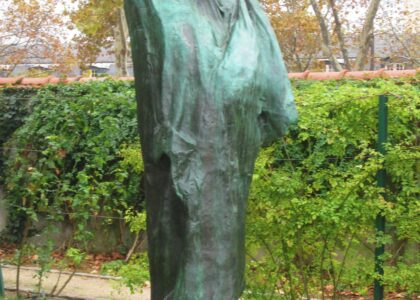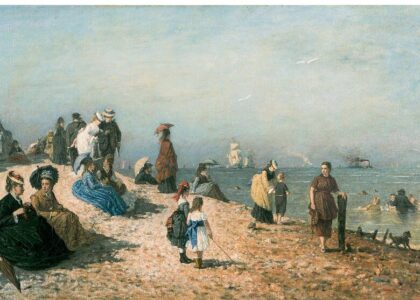Welcome to the world of Max Ernst, a pioneering figure in the realms of Dada and Surrealism. Born on April 2, 1891, in Brühl, Germany, Ernst’s journey as an artist was marked by innovation and defiance of conventional art forms. Initially studying philosophy and psychiatry at the University of Bonn, Ernst’s path took a drastic turn when he abandoned academia for the vibrant world of painting.
Ernst’s early years were shaped by the tumult of World War I, an experience that profoundly influenced his artistic outlook. After serving in the German army, he became associated with the Dada movement, a radical anti-art movement that challenged traditional aesthetics and embraced chaos and irrationality. In Cologne, he co-founded a group of Dada artists, producing provocative works that included collages and photomontages, like ‘Here Everything Is Still Floating’ (1920), which juxtaposed disparate images to evoke a sense of surreal absurdity.
In 1922, Ernst moved to Paris, where he became a central figure in the Surrealist movement, founded by André Breton. Surrealism sought to unlock the creative potential of the unconscious mind, and Ernst was at the forefront with his innovative techniques. He developed frottage and decalcomania, methods that allowed for spontaneous and unpredictable imagery. These techniques became a hallmark of his work, producing iconic pieces like ‘The Great Forest’ (1927) and ‘The Temptation of St. Anthony’ (1945).
Throughout his career, Ernst’s work was characterized by a fascination with the irrational and the dream-like. He was a prolific artist, creating not only paintings but also sculptures and ‘collage novels,’ such as ‘The Woman with 100 Heads’ (1929). His sculptures, like ‘The King Playing with the Queen’ (1944), reflect his ability to translate Surrealist principles into three-dimensional forms.
Ernst’s life was marked by frequent relocations due to the political upheavals of the 20th century. He lived in the United States during World War II, where he married the artist Dorothea Tanning. In the post-war years, he returned to France, where his work became less experimental but remained influential. Ernst’s legacy is celebrated in major exhibitions around the world, such as the retrospective at The Metropolitan Museum of Art in 2005, which showcased over 175 of his works.
Max Ernst passed away on April 1, 1976, in Paris, leaving behind a rich legacy that continues to inspire and challenge the boundaries of art.





